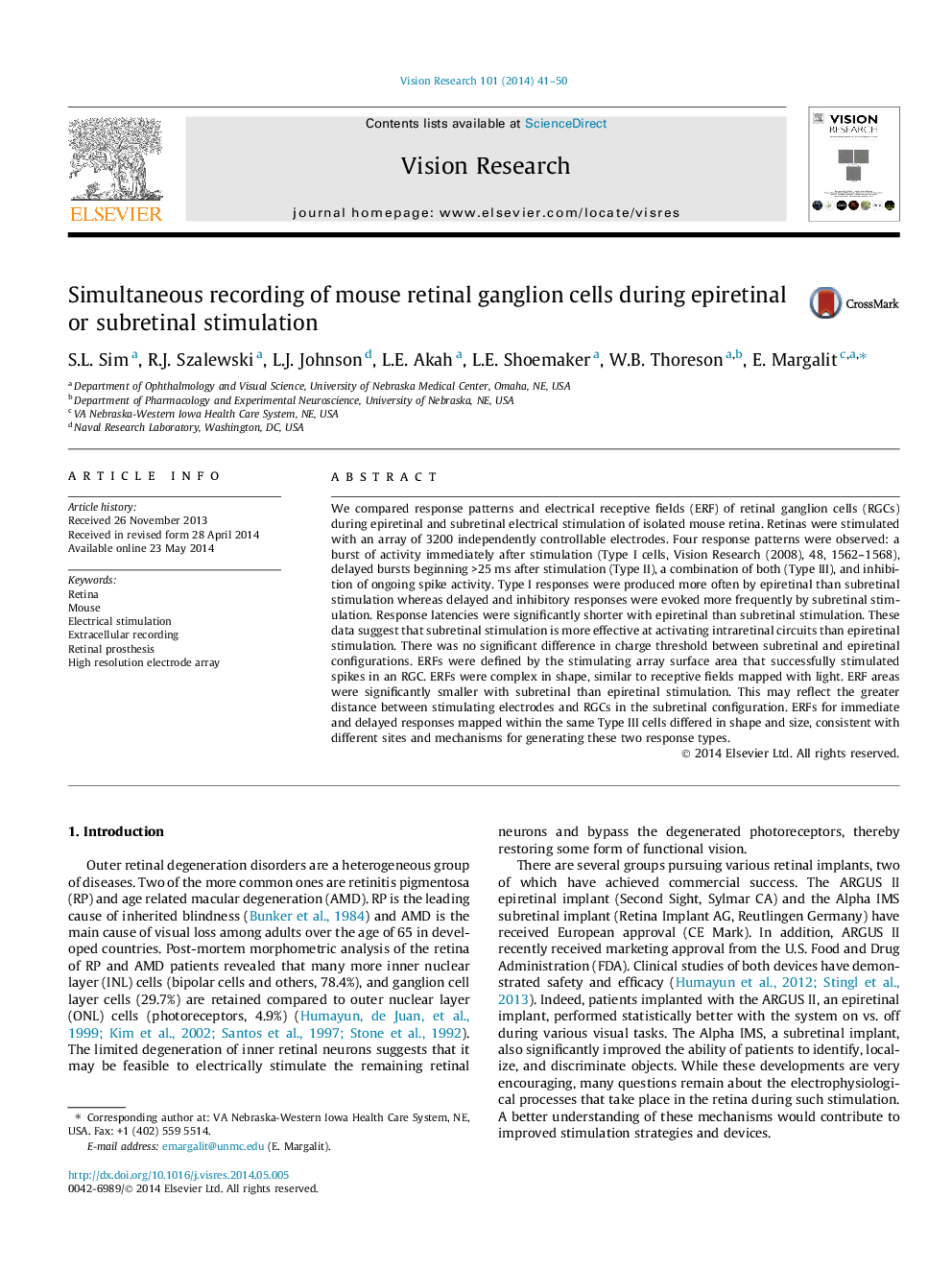| Article ID | Journal | Published Year | Pages | File Type |
|---|---|---|---|---|
| 4033712 | Vision Research | 2014 | 10 Pages |
•Extracellular recordings were simultaneously obtained from retinal ganglion cells.•Electrical receptive fields were complex shapes, similar to light receptive fields.•Response latencies were shorter with epiretinal than subretinal stimulation.•Subretinal stimulation was more effective at activating intraretinal circuits.
We compared response patterns and electrical receptive fields (ERF) of retinal ganglion cells (RGCs) during epiretinal and subretinal electrical stimulation of isolated mouse retina. Retinas were stimulated with an array of 3200 independently controllable electrodes. Four response patterns were observed: a burst of activity immediately after stimulation (Type I cells, Vision Research (2008), 48, 1562–1568), delayed bursts beginning >25 ms after stimulation (Type II), a combination of both (Type III), and inhibition of ongoing spike activity. Type I responses were produced more often by epiretinal than subretinal stimulation whereas delayed and inhibitory responses were evoked more frequently by subretinal stimulation. Response latencies were significantly shorter with epiretinal than subretinal stimulation. These data suggest that subretinal stimulation is more effective at activating intraretinal circuits than epiretinal stimulation. There was no significant difference in charge threshold between subretinal and epiretinal configurations. ERFs were defined by the stimulating array surface area that successfully stimulated spikes in an RGC. ERFs were complex in shape, similar to receptive fields mapped with light. ERF areas were significantly smaller with subretinal than epiretinal stimulation. This may reflect the greater distance between stimulating electrodes and RGCs in the subretinal configuration. ERFs for immediate and delayed responses mapped within the same Type III cells differed in shape and size, consistent with different sites and mechanisms for generating these two response types.
